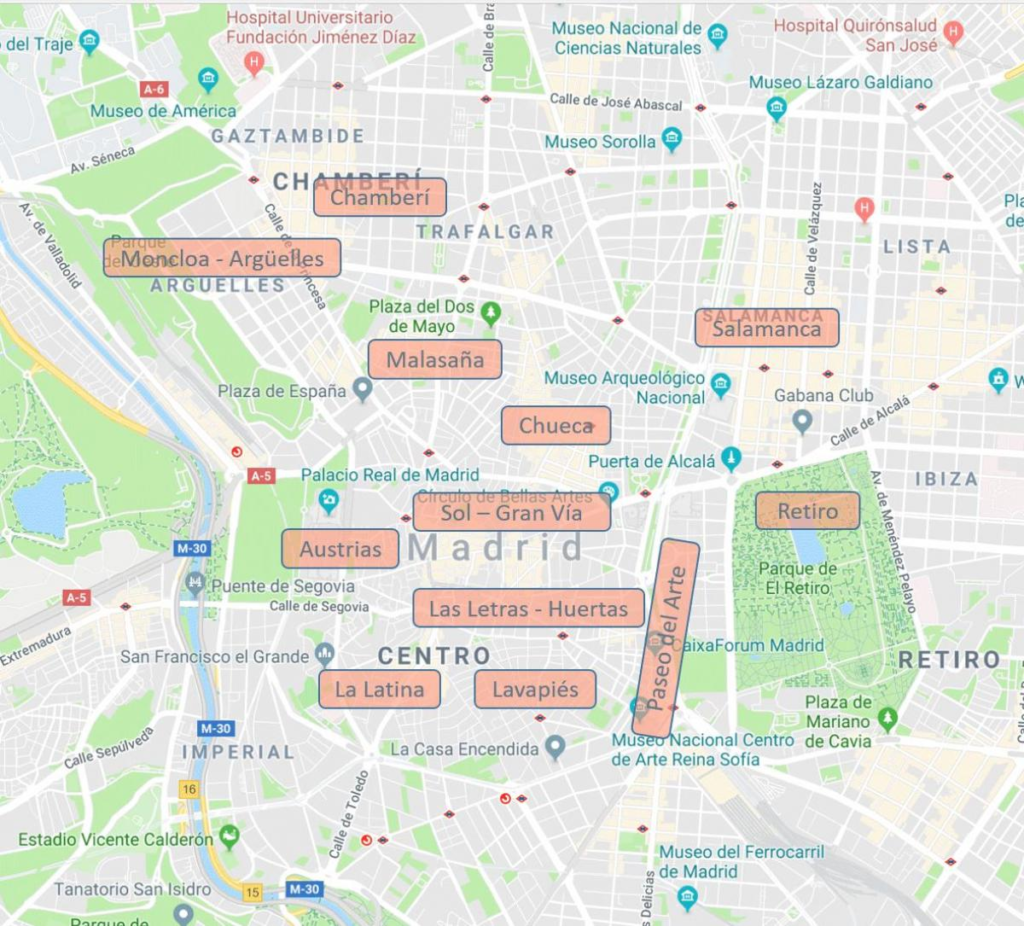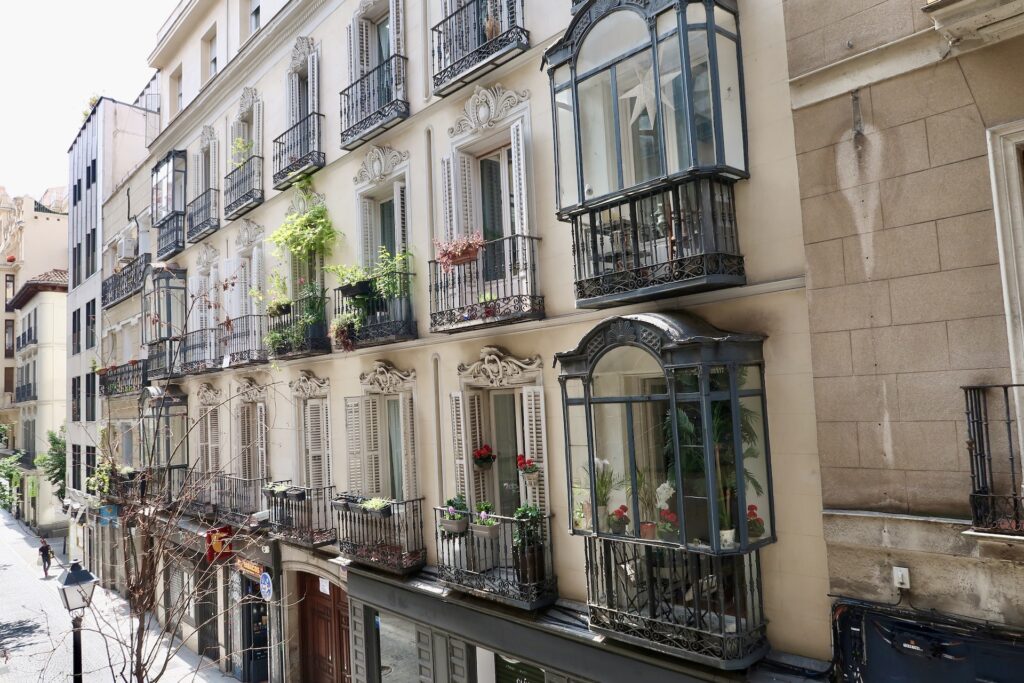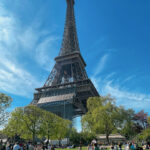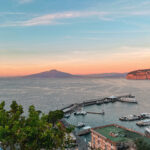
Spain’s capital city of Madrid is known for its captivating atmosphere. It attracts thousands of visitors to admire its landmarks, museums, medieval squares, restaurants, parks, and flamenco shows each year. The neighborhood streets are unceasingly alive…. with so many people enjoying small bites and drinks on the city streets, you might find yourself questioning if the locals actually work! All throughout the day, you’ll find people strolling casually through parks and gossiping at tapas bars. Come discover what the locals love about their charming city.

Currency: Euro (€)
Credit cards are widely accepted. If cash is necessary, you can find plenty of ATMs scattered throughout the city.
Language: Spanish is the official language.
Although English is widely spoken, you may occasionally encounter a small language barrier.
Visa Requirements:
United States citizens do not require a visa and are allowed to stay within Spain for up to 90 days.
When To Visit:
The best time to visit Madrid is in the spring and fall when temperatures are near perfect. Summer weather can be extremely hot and humid. I highly recommend the months of May, June, September, and October.
Getting Around Madrid
Airport: Adolfo Suárez Madrid–Barajas Airport
The airport is about a thirty minute taxi ride to the city center and averages around 30€. The metro (line No. 8) runs from the airport into Madrid city center for only about 6€.
Walking: The best method of getting around the city is on foot. Almost all of the city’s attractions are within walking distance from one another.
Taxi: Uber, Cabify (a local version) and Bolt are super convenient, affordable, and reliable. Vehicle traffic can build up during peak rush hours, so be sure to calculate this into your travel time.
Metro: If you plan to venture a bit further outside of Madrid’s city center to the airport or suburbs, the metro system is clean, safe, and effective.
Where To Stay
Madrid consists of a wide variety of neighborhoods and there are numerous types of accommodation available throughout the city. For first time visitors, it is best to stay centrally in the popular, touristy neighborhoods within walkable distance to top attractions and landmarks. I recommend the areas of La Latina, Gran Vía, and Malasaña.
- La Latina is built on a medieval Islamic fort and is one of Madrid’s oldest and liveliest neighborhoods. The picturesque neighborhood is made up of narrow streets lined with tapas bars, restaurants and plazas.
- Gran Vía is Madrid’s bustling central shopping avenue. Its buildings are lined with clothing and department stores, boutique hotels, banks, and other businesses.
- Malasaña is a vibrant, student-friendly area with bars, nightclubs, coffee shops, and bakeries a bit further from the city center.
Of note, Salamanca is a high-end district made up 19th-century boulevards lined with fine-dining restaurants and designer boutiques. Many upscale, five-star hotels will be located here.

Travel Tip: For a more authentic Madrid experience, Airbnb has many great accommodation options throughout the city. We stayed in a great Airbnb and appreciated the room to rest after long days walking in the humidity!

Where To Eat & Drink
LUNCH & DINNER
Mercado de San Miguel -An absolute must! Immerse yourself in authentic Spanish tapas and choose from an assortment of vendors serving classic dishes, seafood, desserts, and a dedicated Aeperol Spirtz bar. Keep your eye open for the lobster roll on a buttery croissant…. life-changing!

Sobrino de Botín Restaurant – According to Guinness World Records, this restaurant founded in 1725 is the oldest in the world remaining in continuous operation. Tour the restaurant and make sure to try the conchillo (roast suckling pig).
Bel Mondo – If you’re in need of a change from classic Spanish tapas then head to this trendy Italian restaurant. Dine on their expertly decorated terrace, and make sure to order their popular, delicious truffle pasta.
Between Saints Madrid – This hidden gem was one of my favorite spots in Madrid. Grab a seat at a high-top table and sample some well-crafted signature cocktails and unique tapas
Amazónico – Entering, you’ll feel as if you’ve been transported to the Amazon with its palm tree and jungle print decor. Make reservations at the Jungle Jazz Club located on the ground floor with live music daily. You’ll pay a premium for their cocktails, but the atmosphere is worth it.

Museo del Jamón or Mercado Jamón Ibérico – Both of these stores feature whole hams dangling from their ceiling. They are crowded spots, but a cool places to try Spain’s famous black hoof pig, hang out & have a beer.
Casa Dani – Featured on Netflix’s “Somebody Feed Phil,” with multiple reputable reviews, this restaurant is most popular for serving the best tortilla in Madrid.
Casa Toni – small, basic bar restaurant serving authentic Spanish tapas.
Casa Labra – one hundred year old tavern popular for its croqueta de bacalao (cod croquettes).
DESSERT
La Mallorquina – popular pastry shop in Puerto del Sol serving cakes, biscuits, sweets, and chocolates.
Chocolateria San Gines – this 150 year-old shop attracts tourists who line up to try their famous churros served with a cup of warm chocolate. IMO, overrated, but I’ll let you be the judge of that.
Manola Bakes – multiple locations throughout the city and great spot to sample an assortment of sweet and savory croissants.

COCKTAILS, NIGHTLIFE & ROOFTOPS
Ficus – African, botanical bar and restaurant serving unique exotic cocktails.
360° Rooftop Bar – situated on the 26th floor of the Riu Plaza España, experience impressive panoramic views of Madrid and make sure to walk over its glass-bottomed bridge and walkway.
Jack’s Library Cocktail Bar – speakeasy located behind the front of a flower shop. Upon entering, ring a doorbell, then enter a code that’s provided when you make a reservation. You will be guided through a secret door and taken into a 16th century British library bar with an eclectic cocktail list. Highly recommend!
Salmon Guru – funky bar with music, decor, neon lights and a fun cocktail list.
Lula Club – venue hosting concerts for a wide range of genres. Check out some upcoming events here.
Top Attractions & What To Do
1. Plaza de la Armería: Catedral de la Almudena & Palacio Real (Royal Palace)


This beautiful square is situated between two iconic landmarks: Catedral de la Almudena and Palacio Real. Catedral de la Almudena is one of Madrid’s most breathtaking churches with a unique blend of modern exterior and neo-Gothic gothic interior. The cathedral took over a century to build and was eventually consecrated by Pope John Paul II in June 1993. Across the square is Palacio Real (Royal Palace), the official residence of the Spanish royal family. It is now primarily used for state ceremonies and open to visitors. It is the largest palace in Western Europe and one of the largest in the world. Take a self-guided tour and explore the many elegant, opulent rooms.

2. Puerta del Sol
Puerta del Sol Puerta del Sol is one of the busiest public squares in Madrid. It’s a major transport hub with many shops, restaurants, bakeries, and department stores within its walls. During the 15th century, the square was originally one of the gates of the city wall. In the 18th century, the Casa de Correos (House of the Post Office) was established which is now the headquarters of the community President. A symbolic feature within the square is El Oso y el Madroño (Statue of the Bear and Strawberry Tree) which represents the coat of arms of Madrid.
2. El Ritero Park
This gorgeous park is a UNESCO heritage site that once belonged to the Spanish Monarchy until the late 19th century. Make your way around the gardens, check out the various monuments, and rent a small paddle boat around the lake. Within the park you’ll find Palace de Cristal, a 19th century conservatory, made up of glass panels and an iron framework. The beautiful building is now mostly used for art exhibitions.

3. Plaza Mayor
This historic square which name means “oldest square” is home to restaurants, cafes, shops, boutiques, artists and street performers. The square was originally named “Plaza del Arrabal” and has changed designs multiple times throughout history. During the 15th century it was once used as a marketplace for traders as well as hosting bullfights, festivals, and sporting events.
6. Top Museums
1. Museo Nacional del Prado – The Prado is one of the greatest and most visited museums in the world. It is the home of Spain’s royal art collection dating from the 12th century to the early 20th century.
2. Centro de Arte Reina Sofía – a popular museum that houses Madrid’s premier collection of contemporary art featuring works by Picasso.
3. Thyssen-Bornemisza National Museum – one of Madrid’s three great art museums that is home to masterpieces from the 13th through the 20th century.
7. Santiago Bernabéu Stadium
What’s a more European experience than standing in a crowded stadium chanting during a live soccer game! This famous stadium is the home to one of the most competitive and successful teams in football history, Real Madrid. I highly recommend splurging on tickets during your trip to Madrid.
8. Day Trip From Madrid

Toledo, Ávila and Segovia are popular nearby cities accessible by car, bus, or train. With limited time it can be tough decision on which city to choose. My family opted for Segovia to learn more about Spain’s Roman heritage. Segovia’s main hightlights include its magnificent aqueduct and the Alcázar, which served as an inspiration for Walt Disney’s castle.

9. See a Flamenco Show
Immerse yourself in Spanish culture and embrace one of the most iconic forms of dance that originated in the Andalusian region of the country. Flamenco is a Spanish art form consisting of song, dance, and guitar playing. This is a must do if this is your first time in Spain! Many of the shows throughout the city offer a traditional Spanish dinner during your experience.
10. Real Jardín Botánico:
The Royal Botanical Garden was founded in the late 18th century and is located just across from The Prado Museum. After multiple changes throughout history, the garden is now divided into seven major outdoor sections and five greenhouses which allow the cultivation of species which are not suited to Madrid’s climate. Total collections include about 90,000 plants and flowers, and 1,500 trees. Admission to the garden is only €4. In my opinion the garden is a bit underwhelming, but it’s not a terrible way to slow down and relax for an hour or two.
11. Puerta de Alcalá
On your walking tour of Madrid, make sure to wander northwest of El Retiro park and admire this majestic gate that was once Madrid’s eastern entrance. The granite gate was built between 1769 and 1778 and designed by Francisco Sabatini. It was erected as a triumphal arch to celebrate the arrival of the monarch at the capital. Today, it represents a symbol of the Spanish metropolis.
12. Sundays at El Rastro flea market
El Rastro is large, popular open-air flea market open every Sunday. The market is located in the La Latina neighborhood and hosts hundreds of different stalls selling ceramics, vintage items, clothing, decor and more!














